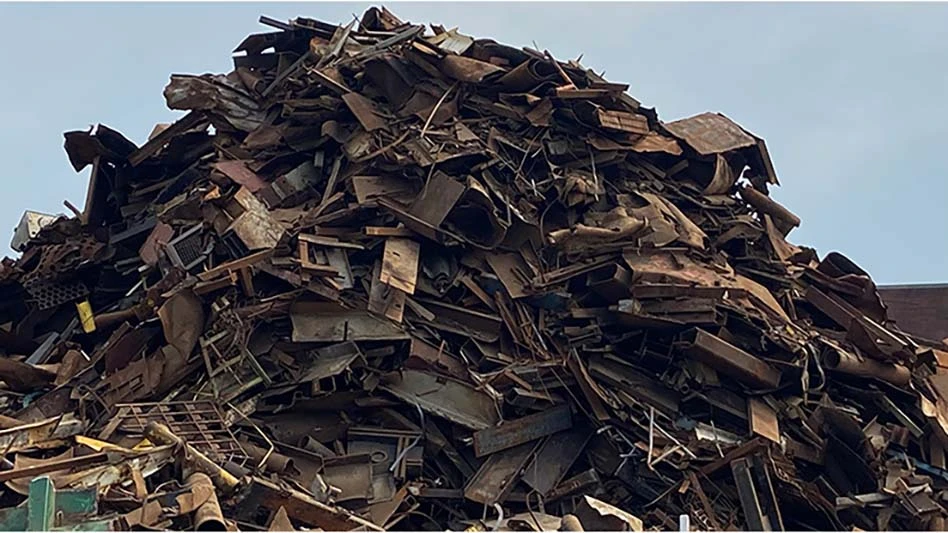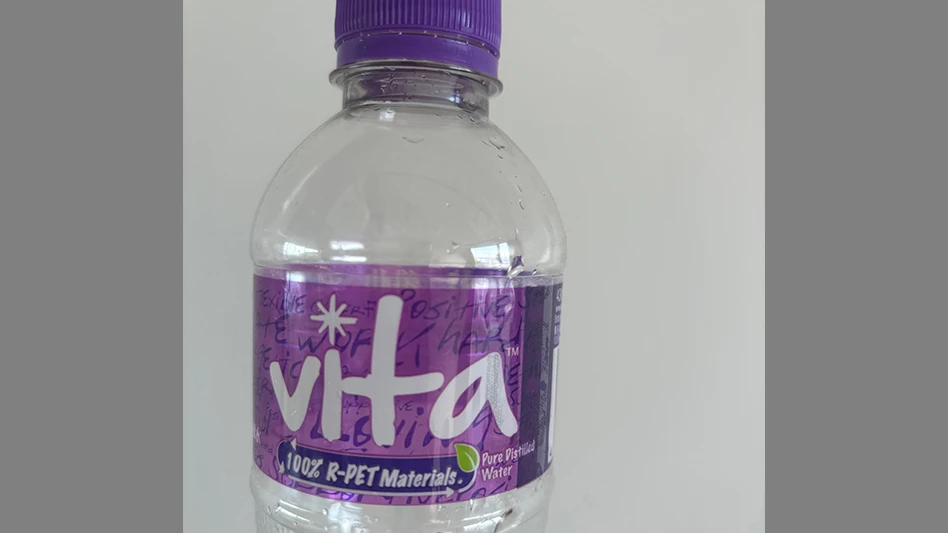
Launched in April 2006, the SteelBenchmarker service from World Steel Dynamics (WSD), Englewood Cliffs, N.J., is a steel price assessment service that includes data from 950 providers, including steel buyers, sellers and users. The products covered include hot-rolled band, cold-rolled band, standard plate and rebar.
According to WSD on the SteelBenchmarker website, www.steelbenchmarker.com, “The SteelBenchmarker is designed to provide a reliable set of benchmark prices that has become trusted by steel buyers and sellers [around] the world. Over the next few years, it will become the underpinning for an extraordinary surge in the trading of financial instruments for the hedging of steel price risks.”
Benchmark prices provided through the service are based on the average of the price assessments after outliers have been eliminated, WSD says. SteelBenchmarker includes features that are designed to assure its effectiveness and to prevent its misuse, according to WSD. These features include:
- “Robust” pricing, which in the language of financial derivatives means the price is accurate and cannot be manipulated.
- Providers do not receive feedback on their price assessments.
- The benchmark prices are calculated via a third-party computer that only looks at the price inputs.
- An outside auditor conducts regular, unannounced audits on the SteelBenchmarker processes and procedures.
SteelBenchmarker data have become the basis for futures contracts for steel scrap that have been launched by the Chicago Climate Futures Exchange (CCFE) and WSD, known as World Steel Exchange (WSE). These contracts trade and clear on CCFE’s Internet-accessible trading platform, Chicago Climate Exchange (CCX).
“The trading of futures contracts on the World Steel Exchange will give those involved in buying or selling steel scrap, steel products and steelmakers’ raw materials the opportunity to hedge the price risk, which is a critical need given the volatility of prices in these sectors,” Peter Marcus, WSD managing partner, said at the time the service was announced in the summer of 2009.
The World Steel Exchange Marketing Group supports the WSW venture. The group’s Executive Vice President John Conheeney and Patrick McCormick, WSD managing partner, address futures markets and the WSE service in a Q&A with Recycling Today.
Recycling Today (RT): What can WSE do to reassure brokers and processors who are concerned that a futures market may overshadow market fundamentals?
John Conheeney and Patrick McCormick (JC & PM): One of the benefits of settling WSE scrap futures contracts basis the SteelBenchmarker™ Index is that that the monthly final settlement price is the average price derived from transactions reported only by those directly involved in buying and selling steel scrap and steel. Each contribution is evenly weighted and, in the case of companies with multiple locations, no one company’s prices can make up more than 15 percent of the inputs.
Since WSE steel scrap futures settle against the SteelBenchmarker Index price and will never end in physical delivery (by definition), concerns that could arise in physical delivery futures markets, such as extraordinary delivery surpluses or shortages, cannot happen with the WSE contracts. Thus, WSE steel scrap futures by design will have no impact on supply and demand fundamentals or on last of trading settlement prices.
RT: To what extent do you hear that traders and processors enjoy taking advantage of price volatility? How does WSE respond to that sort of feedback?
JC & PM: We think that traders and processors in all commodity markets love price volatility provided that prices are at cyclical lows when they are buyers and prices are at cyclical highs when they are sellers! Those who say they “enjoy taking advantage of volatility” also need a strong stomach to handle the pain when the markets are against them. The steel trader’s job is to protect his company’s margins as best he can with the tools he has.
The best risk management tool the trader has today is making sure he has good market information and the ability and flexibility to manage his inventory. However, as price volatility increases as a percentage of inventory valuations, the risk to the companies’ margins also increases. It is from this perspective that we believe that price volatility is a risk and not an advantage to scrap processors and traders.
We learned during our conversations with scrap processors that many already use nonferrous futures to protect thin margins on that side of the business. Many are looking forward to the opportunity to apply these skills to the ferrous side of the business. If there is an advantage to price volatility, it will most likely belong to those who are good price risk managers. Good price risk managers possess a working knowledge of financial hedging tools and typically have a disciplined approach to applying them.
RT: Can you cite a recent example in the ferrous market where hedging would have provided helpful protection against volatility?
JC & PM: The most glaring example was the experience of 2008. Prices of scrap more than doubled in six months and then subsequently crashed to historical lows. Inventory valuations were decimated with huge financial losses. A hedged trader in that market would have seen his financial hedge pay the cost of his inventory valuation loss.
RT: As the only exchange offering ferrous scrap, are you offering this service to mill and foundry buyers of scrap as well?
JC & PM: WSE is available to all industry segments of the market. We believe that the price risk management tools will benefit all buyers and sellers of scrap because the SteelBenchmarker scrap index will capture the underlying price volatility that everyone is exposed to.
RT: For how long has the SteelBenchmarker pricing information been gathered, and what are some noteworthy insights WSE has gained by accumulating this information?
JC & PM: We began gathering price information for HRB (hot-rolled band) and CRC (cold-rolled coil) in April of 2006. We listed busheling, shredded and No. 1 HMS (heavy melting steel) in April of 2007.
It is important for traders to appreciate that Steelbenchmarker was designed to be a futures settlement index from day one. Its process was designed to comply with U.S. anti-trust laws, to meet CFTC (Commodity Futures Trading Commission) scrutiny and, most of all, to provide prices that the trading public accepts as accurate and true.
SteelBenchmarker participation is open to all bono fide physical market participants (scrap collectors, processors, physical traders and consumers/mills/foundries). No financial speculators are allowed to input prices.
Our index is a geographical composite in contrast to individual city published prices. Our correlations to other known indices are extremely high, and our process is well-safeguarded against potential manipulation.
One noteworthy insight is our peak prices are generally lower than RMDAS (Raw Material Data Aggregation Service; a service of Management Science Associates of Pittsburgh) and AMM (American Metal Market) Chicago prices because it is a composite price index. It is not heavily weighted to large scrap consumers forced to expand their geographies in times of tight supply. Hence the SteelBenchmarker is impacted less in peak markets due to the higher freight costs incurred in reaching out to more distant scrap sources.
John Conhenney is executive vice president of World Steel Exchange Marketing Group. Patrick McCormick is managing partner of Word Steel Dynamics (www.worldsteeldynamics.com). Both companies are based in Englewood Cliffs, N.J.
Latest from Recycling Today
- Two factors raise ferrous export questions in April
- Analyst: Scrap imbalance lost amid copper’s critical status
- AF&PA report shows decrease in packaging paper shipments
- GreenMantra names new CEO
- Agilyx says Styrenyx technology reduces carbon footprint in styrene production
- SABIC’s Trucircle PE used for greenhouse roofing
- Hydro to add wire rod casthouse in Norway
- Hindalco to invest in copper, aluminum business in India





